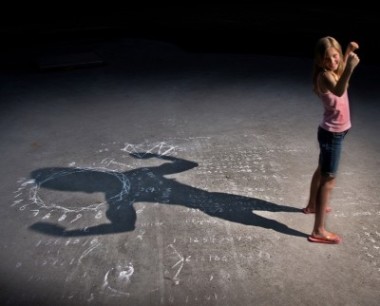Parents concerned about the digital part of parenting deserve to know that they are not starting from scratch when their kids start using phones, tablets and other connected devices – even if they haven’t had conversations about digital safety yet. Far from it. Besides a loving family member or 2, 3 or 30 and the safeguarding norms, identity and values that most kids develop at home, kids also come with resilience, one of life’s key safeguards, online and offline. It’s that ability to bounce back from challenges, hardship, suffering, etc.

“All individuals have it – it is an innate characteristic that can be bolstered by environmental factors (you! me! a healthy home! a wonderful school! positive leaders in the community! and others!),” writes cyberbullying prevention scholar Sameer Hinduja in a blog post about a remarkable, very international gathering we both attended last month, Facebook’s Global Safety Network Summit (where it was inspiring to hear youth advocates, activists, parents and risk-prevention practitioners from 4 continents talk about their work and research).
Kids’ resilience levels
Resilience is part of our online well-being, Dr. Hinduja continues, “an umbrella concept that refers to a state of psychological, emotional, and mental health where individuals can use, embrace, exploit, and enjoy online communications for all they are worth.”
He and his Cyberbullying Research Center co-director Justin Patchin, recently measured resilience in U.S. 12-17 year-olds. Interestingly, they found that, “though some adults believe that youth are lacking resilience across the board, the average kid ranked above the midpoint, which points out that those seeking to help build out that competency are not starting from scratch” (see this for more of their research).
What hinders & what helps
Interestingly, in response to a question about what keeps that number from going up, Hinduja points to a kind of learned helplessness (the opposite of resilience) that comes from over-focusing on online dangers, representing kids as potential victims (rather than potential helpers and upstanders) and advising them to “tell an adult” when victimization does happen. [We do want them to get help from the best source possible when they need it, and sometimes that is an adult, but we also want to encourage them to cultivate their individual and collective powers to help and solve problems.]
And this might seem ironic, but here’s the other thing that keeps kids’ resiliency from growing: trying to keep them completely safe. To grow resilience, human beings have to have some degree of exposure to adversity (hardship, distress, difficulty, suffering), the researchers of EU Kids Online reminded us in a 2013 paper on this subject.
Think of it this way: How could anyone get better at bouncing back if there’s nothing to bounce back from?
Note to parents
At the end of his post, Hinduja offers some great advice to “his 13-year-old self.” But even if you can’t get your kids to read those last two paragraphs, this is solid guidance for parents too. Because we can parent in a way that helps our kids understand these wise words:
“You have agency. You have autonomy. You can choose to NOT let those online words affect you,” he wrote. “There will always be haters. And they don’t define you.”
Many of us have heard, by now, that the old “sticks and stones” adage isn’t true. Words do hurt. We know that, but we can’t leave our children or ourselves there. We don’t even stop at teaching the ancient ethic of meeting hate with kindness. What strengthens and enables that ethic to be practiced are two things: agency – our children’s capacity to act and make change for the better (for themselves and others) – and identity, coming to know what defines them. Some terms people use for that are self-knowledge, a moral compass, an inner guidance system. Whatever we call it, it’s a source of strength, resilience and safety, online and offline. It’s one of those internal safety “tools” that haven’t received enough attention in the international public discussion about youth online.
Related links
- For more data on this from the Cyberbullying Research Center (of which Sameer Hinduja is co-director): “Cultivating Resilience to Prevent Bullying and Cyberbullying”
- A powerful support to a child’s developing self-knowledge is what experts call a “strong family narrative.”
- More on agency and what it has to do with (digital) citizenship
- A bit about how kids are developing resilience through Minecraft play (“Learning resilience online through Minecraft”) and a Minecraft Family Guide & FAQ from researchers at Harvard
- Resilience in the online safety context: “Balancing external with internal safety ‘tools'”
- Earlier posts of mine on resilience: “Heart to heart: How connection protects and grows resilience” and “How to grow resilience, Part 2”
- 2013 was when I first picked up on resilience as key to online safety – after reading EU Kids Online’s paper on the subject “Study on long-neglected factor in Net safety: Resilience”

[…] of how a teenager toyed with a so-called Blue Whale curator and easily moved on (reminding me of resiliency‘s important role online and offline, one of the internal safeguards that hasn’t gotten […]